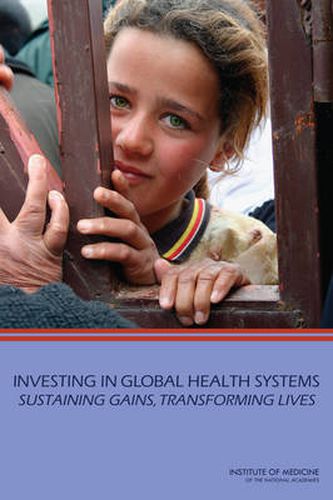Readings Newsletter
Become a Readings Member to make your shopping experience even easier.
Sign in or sign up for free!
You’re not far away from qualifying for FREE standard shipping within Australia
You’ve qualified for FREE standard shipping within Australia
The cart is loading…






The United States has been a generous sponsor of global health programs for the past 25 years or more. This investment has contributed to meaningful changes, especially for women and children, who suffer the brunt of the world’s disease and disability. Development experts have long debated the relative merits of vertical health programming, targeted to a specific service or patient group, and horizontal programming, supporting more comprehensive care. The U.S. government has invested heavily in vertical programs, most notably through the President’s Emergency Plan for AIDS Relief (PEPFAR), its flagship initiative for HIV and AIDS. PEPFAR and programs like it have met with good success. Protecting these successes and continuing progress in the future depends on the judicious integration of vertical programs with local health systems. A strong health system is the best insurance developing countries can have against a disease burden that is shifting rapidly and in ways that history has not prepared us for. Reaching the poor with development assistance is an increasingly complicated task. The majority of the roughly 1 billion people living in dire poverty are in middle-income countries, where foreign assistance is not necessarily needed or welcome. Many of the rest live in fragile states, where political volatility and weak infrastructure make it difficult to use aid effectively. The poorest people in the world are also the sickest; they are most exposed to disease vectors and infection. Nevertheless, they are less likely to access health services. Improving their lot means removing the systemic barriers that keep the most vulnerable people from gaining such access. Investing in Global Health Systems discusses the past and future of global health. First, the report gives context by laying out broad trends in global health. Next, it discusses the timeliness of American investment in health systems abroad and explains how functional health systems support health, encourage prosperity, and advance global security. Lastly, it lays out, in broad terms, an effective donor strategy for health, suggesting directions for both the manner and substance of foreign aid given. The challenge of the future of aid programming is to sustain the successes of the past 25 years, while reducing dependence on foreign aid. Investing in Global Health Systems aims to help government decision makers assess the rapidly changing social and economic situation in developing countries and its implications for effective development assistance. This report explains how health systems improvements can lead to better health, reduce poverty, and make donor investment in health sustainable.
$9.00 standard shipping within Australia
FREE standard shipping within Australia for orders over $100.00
Express & International shipping calculated at checkout
The United States has been a generous sponsor of global health programs for the past 25 years or more. This investment has contributed to meaningful changes, especially for women and children, who suffer the brunt of the world’s disease and disability. Development experts have long debated the relative merits of vertical health programming, targeted to a specific service or patient group, and horizontal programming, supporting more comprehensive care. The U.S. government has invested heavily in vertical programs, most notably through the President’s Emergency Plan for AIDS Relief (PEPFAR), its flagship initiative for HIV and AIDS. PEPFAR and programs like it have met with good success. Protecting these successes and continuing progress in the future depends on the judicious integration of vertical programs with local health systems. A strong health system is the best insurance developing countries can have against a disease burden that is shifting rapidly and in ways that history has not prepared us for. Reaching the poor with development assistance is an increasingly complicated task. The majority of the roughly 1 billion people living in dire poverty are in middle-income countries, where foreign assistance is not necessarily needed or welcome. Many of the rest live in fragile states, where political volatility and weak infrastructure make it difficult to use aid effectively. The poorest people in the world are also the sickest; they are most exposed to disease vectors and infection. Nevertheless, they are less likely to access health services. Improving their lot means removing the systemic barriers that keep the most vulnerable people from gaining such access. Investing in Global Health Systems discusses the past and future of global health. First, the report gives context by laying out broad trends in global health. Next, it discusses the timeliness of American investment in health systems abroad and explains how functional health systems support health, encourage prosperity, and advance global security. Lastly, it lays out, in broad terms, an effective donor strategy for health, suggesting directions for both the manner and substance of foreign aid given. The challenge of the future of aid programming is to sustain the successes of the past 25 years, while reducing dependence on foreign aid. Investing in Global Health Systems aims to help government decision makers assess the rapidly changing social and economic situation in developing countries and its implications for effective development assistance. This report explains how health systems improvements can lead to better health, reduce poverty, and make donor investment in health sustainable.